This section contains entries about our botanizing in Baja California written for the UC BEE (Oct 2012 to Aug 2021)
and The UC Hive (2022-), monthly newsletters for volunteers and staff of the UC Berkeley Botanical Garden.
Click on any photo for a larger image.
BEE FEB 2018
El Gallito Dunes, Mulegé — December 2017
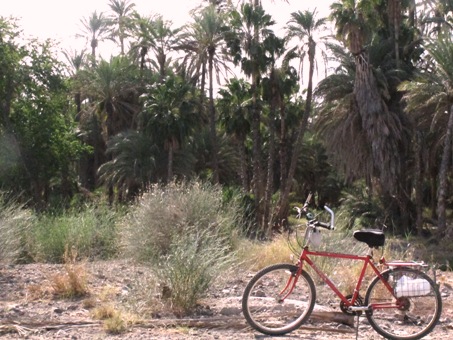 It seems like this season, I’m on a roll when it comes to different forms of transport to get my botany fix. So far, I’ve hiked, biked and gone out not only in our car, but our friend’s dune buggy (nothing off-road, just back roads; see last month’s article). So why not keep up the momentum and try yet another form of transportation? This time, it was a friend’s horse and the destination was the beach.
It seems like this season, I’m on a roll when it comes to different forms of transport to get my botany fix. So far, I’ve hiked, biked and gone out not only in our car, but our friend’s dune buggy (nothing off-road, just back roads; see last month’s article). So why not keep up the momentum and try yet another form of transportation? This time, it was a friend’s horse and the destination was the beach.
Beaches and dunes around the world have been heavily impacted by human activity and natural phenomena. Along Bahía Concepción, which extends from Mulegé about 25 miles southward, there isn’t very much wave action or current and this has resulted in beaches with very flat profiles. Add to that, 40+ years of fishing and tourist activities, including driving on the beach, camping, and construction, and you end up with hard, flat, sandy areas with very little natural vegetation.
In our area along the immediate Gulf Coast (as opposed to inside Bahía Concepción) the prevailing northerly winds have created large, extensive dune fields in several places, and fortunately, most of them are isolated and not heavily impacted on a regular basis. One area, on the north side of Punta Chivato extends several kilometers inland and these dunes have well-established vegetation and large areas of stabilized sandy-silty soil. A few roads go through them, but most of the area is inaccessible to motorized activity.
December 2017
Just south of the Mulegé River, and right at the mouth of Bahía Concepción, are the El Gallito dunes. For years, I've wanted to hike across this area and reach the base of the small volcanic plug called El Gallito.
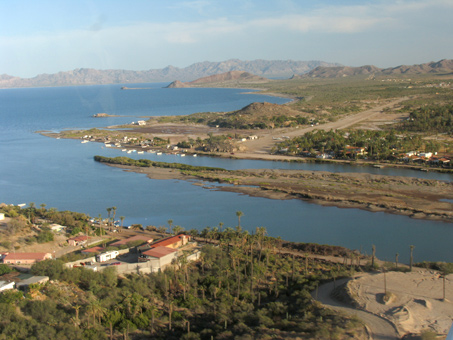
Aerial view across the mouth of the Río Mulegé (foreground) into the mouth of Bahía Concepción, with El Gallito dunes. Botanizing by small plane in 2010.
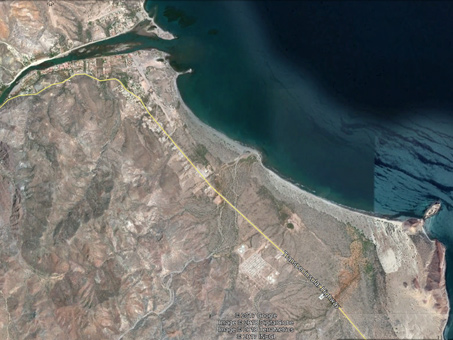
Google Earth image of the beach and dunes. Click to enlarge.

Our steeds await us under a spindly Mesquite early one morning in December.
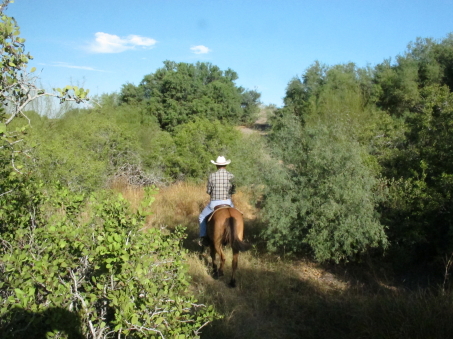
My second big challenge nears: staying on the horse as we climb up into the dunes. The first was hauling my creaky self into the saddle.

I've not been up in this part of the dune system. We did some vegetation plots about 4 years ago in a different area where the scrub was very dense and we never made it through to the beach.
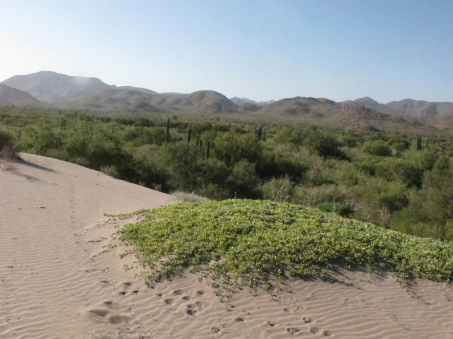
Beach Sand Verbena / Alfombrilla (Abronia maritima, Nyctaginaceae). There are large patches throughout the rear dunes as well as closer to the beach.
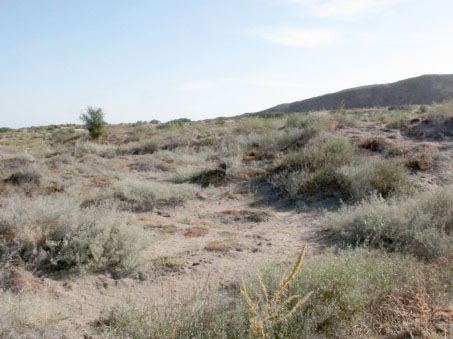
Dune species include many that are gray-green and densely hairy.
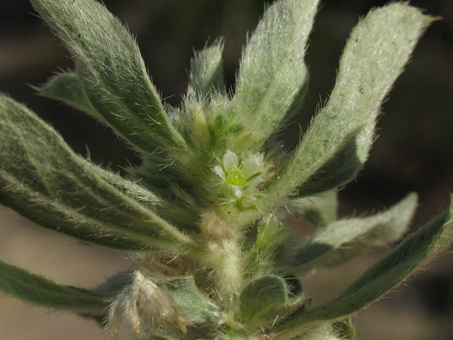
Yuma sandmat (Ditaxis serrata var. serrata, Euphorbiaceae). This is a monoecious species, with separate staminate and pistillate flowers on the same plant. Pictured here is a staminate flower. Baja California plants vary from those in other regions where it is found, in that they have non-serrated leaves.
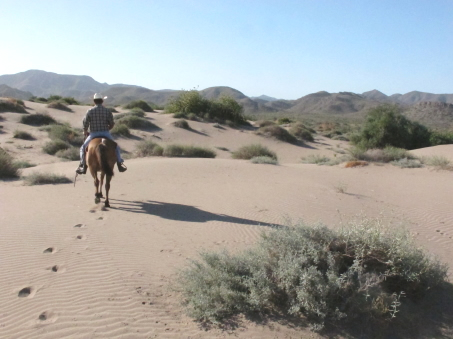
No tumbleweeds here. Just lots of Gulf Crinklemat (Tiquilia cuspidata, Boraginaceae). This is a dominant plant of beach and inland dunes. In drier times, the plant becomes silvery gray in color.
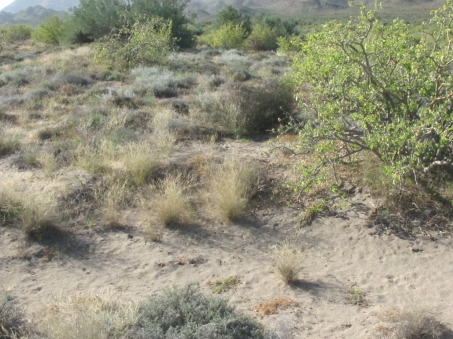
Less active dune with denser ground cover. The silvery plant above center is Psorothamnus emoryi. The grass is the native annual Aristida adscencionis. The shrub on the right is Lomboi.
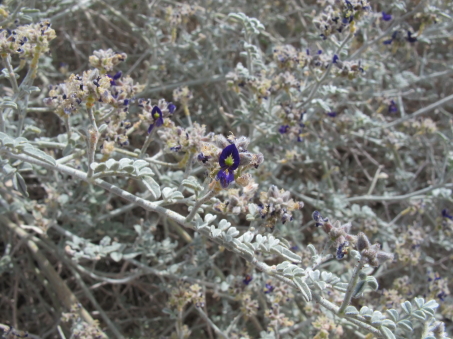
(Psorothamnus emoryi var. emoryi) is well-adapted to dune life. Growth is open and airy and the herbage is canescent (densely hairy).
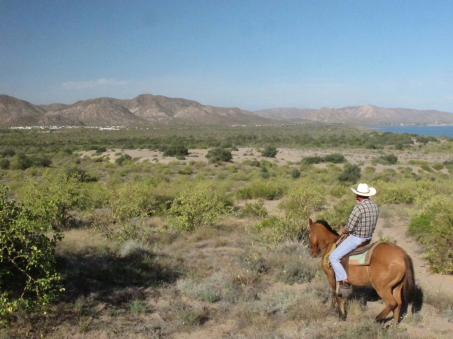
View from up on the dunes at the base of the volcanic plug.
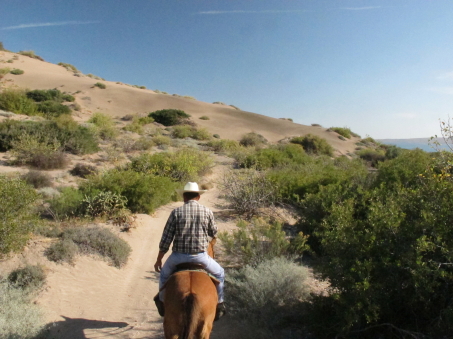
Onward to the beach and lighthouse island (Isla Gallo). Dunes at the base of the small volcanic outcrop to the left.
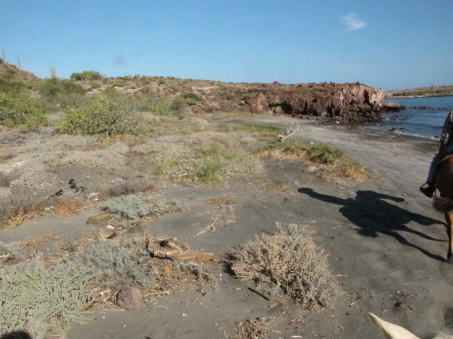
A good example of the desert scrub coming right up to the shore. Barclay Saltbush, the gray plants in foreground (Atriplex barclayana, Chenopodiaceae). Shrubs are Lomboi (Jatropha cinerea). For grass to the right, see the next photo.
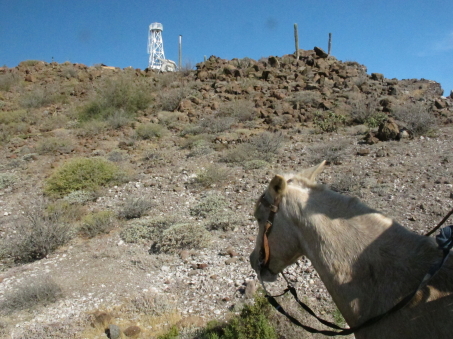
Marcelo removed the saddles and we rode the horses through the chilly "surf" over to the island. The water level was just below the horses´back. First, and last time riding bareback!

From the beach, we circled around Cerro El Gallito and back to the next beach to the north.
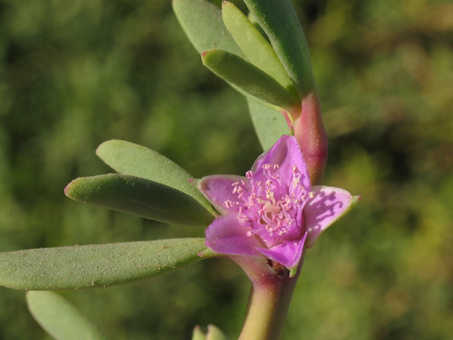
Sea Purslane is generally found on the foredunes. The herbage resembles other members of the iceplant family. The flower, about 1 cm D, has no petals but rather, the interior surface of the calyx is pink and petalloid.
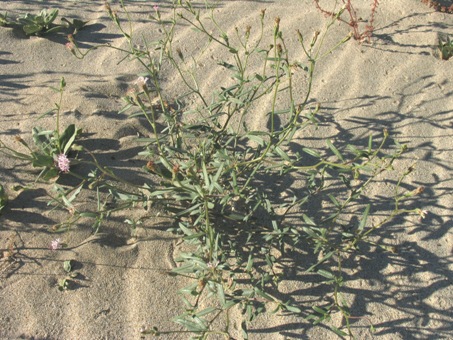
Beach Spanish Needle/Coast Palafox (Palafoxia linearis, Asteraceae). In our area, this species occurs only on beach dunes. The leaves are thick, with dense, appressed hairs. Its open branching helps to reduce sun/heat exposure on the dune surface.

Sonoran Goldenbush/Hierba del Pasmo (Gundlachia diffusa, Asteraceae). This shrub is common on beach dunes and the edges of wetlands in the southern part of the peninsula.
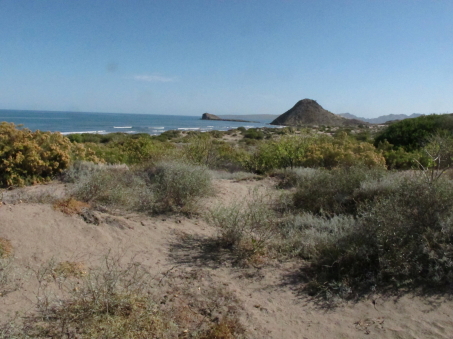
Looking back at El Gallito and island.

Here in the desert scrub between the dunes and the highway, the area is disturbed by livestock and occasional flash floods. This noxious weed spreads rapidly close to the highway and side roads.
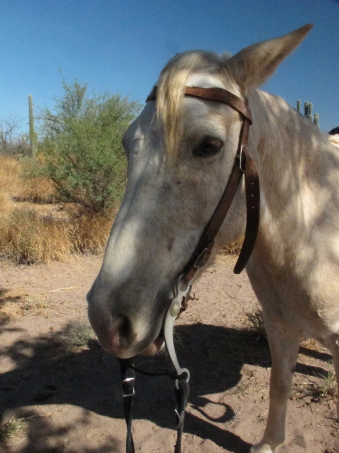
My unenthusiastic mount.
Happy to be back
(I think).
He closed his eyes and went to sleep.
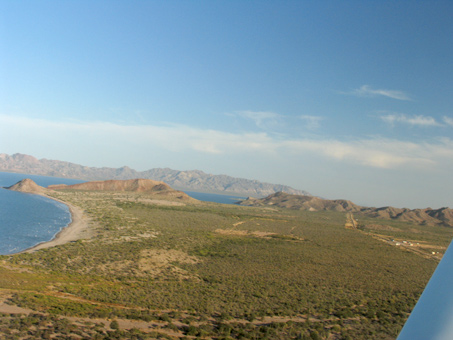
El Gallito dune system (foreground to hill on left)). The transpeninsular highway runs vertically along the right edge. Bahía Concepción and its eastern peninsula can be seen towards the top.
The dunes have always seemed to offer a special promise for botanizing because of their inaccessibility, though there are the occasional ATV riders who just can’t seem to resist ripping up pristine vegetation for a few kicks.
This autumn the dune slopes were visibly bright green from the highway and I really wanted to know what plants were up there. However, for me it was more than I would be able to manage on foot. Walking there one way along the beach is a 4.5 km (2.8 mil) trip and from the highway through tall grass and scrub, then a steep climp into the dunes, it's almost 2 km (1.25 mi). Marcelo's horses seemed the definite way to go, and I was finally physically feeling up to giving it a try.

It’s been more than 40 years since I've regularly ridden a horse. But, like riding a bike, it comes back to you.

I stayed on, and now up on the dunes, Marcelo continues to lead the way. Nice to just mosey along.
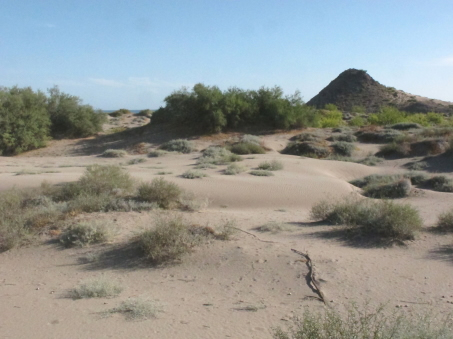
There was no apparent evidence of livestock and Marcelo says that cattle and horses don't graze here. The dunes appeared mostly smooth and wind-swept.
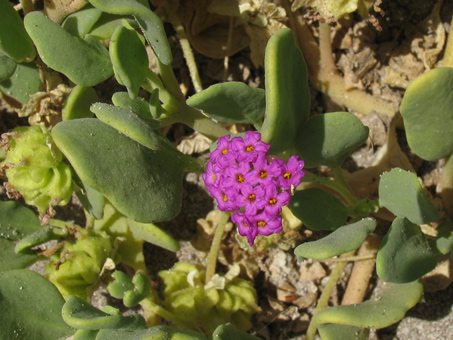
Flowers, leaves and fruit of Sand Verbena. The leaves are thick and leathery, better to retain moisture and survive the hot surface temperature.
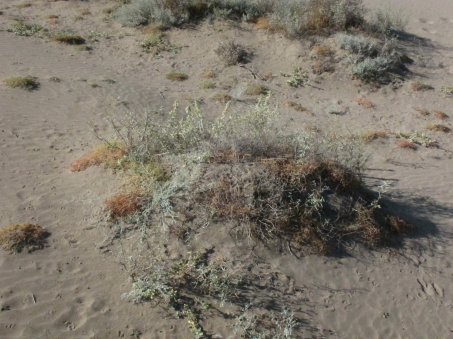
This small mound has a collection of plants tyicpal to the dunes in our region: Psorothamnus, Ditaxis, Euphorbia, Palafoxia and Cenchrus.
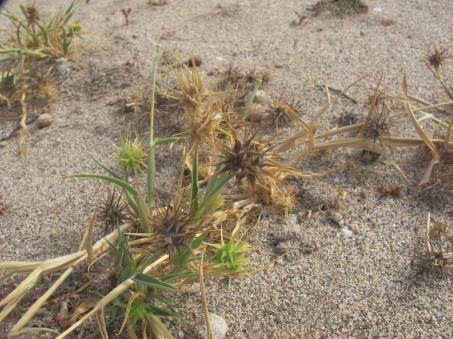
Southern Sandbur / Huizapol (Cenchrus palmeri, Poaceae). A really nasty annual native, the spines are hard and sharp. It is easily dispersed by animals, socks, shoes and tires. The seed germinates inside the bur and takes root. The young burr is red or green, and matures to maroon/black or tan.
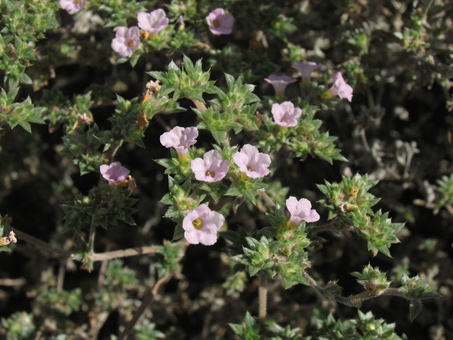
Gulf Crinklemat (Tiquilia cuspidata). The leaves are about 3-4 mm L, somewhat thick, densely hairy, and have a sharp tip. The flowers are 6-7 mm D and pinkish-white, pink or dark lavender.
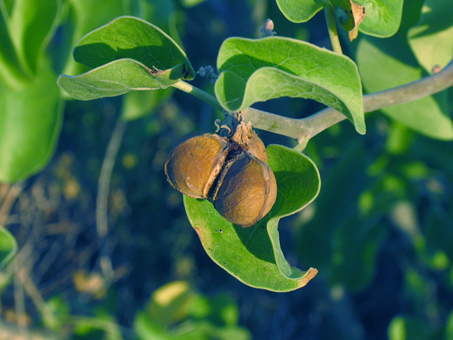
Leaf and fruit of Lomboi / Ashy Limberbush (Jatropha cinerea, Euphorbia). The leaves are large, heart-shaped and drought deciduous.
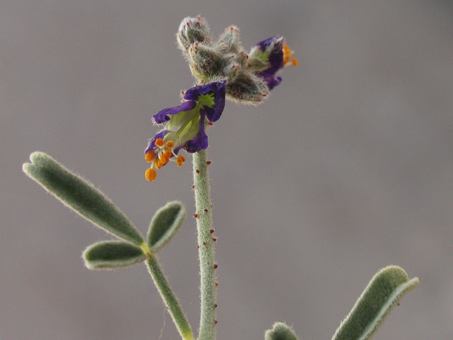
Orange glands with volatile oils dot the stems, leaves and calyces of Dye Bush, and likely help to deter herbivory by insects and larger animals.

I discovered that the bright green color of the dunes as seen from the road was due to the large number of leafy Lomboi shrubs.
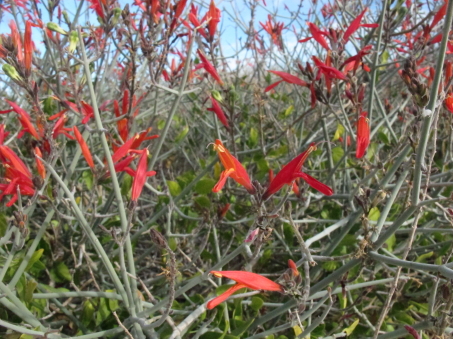
Poking out here & there were clusters of Chuparrosa/Hummingbird Bush (Justicia californica, Acanthaceae). This species is abundant in rear dunes, and less so inland in sandy soils.
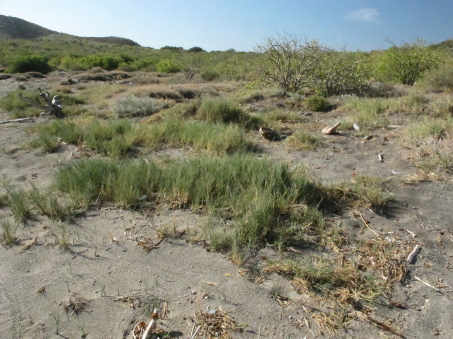
The small berm with a dense population of Seashore Dropseed/Zacate Costero (Sporobolus virginicum, Poaceae), as seen in the previous photo. This is the area´s primary beach grass and here it is denser than usual because of limited human disturbance.
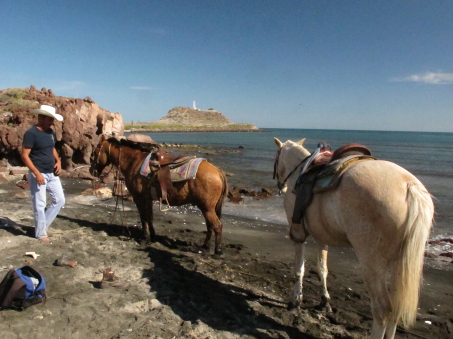
Not much to see on the island for a shoeless botanist, so it was back to the mainland. We all dried off before the saddles went back on and then we climbed aboard for the return loop. Oh, my shaky thighs!
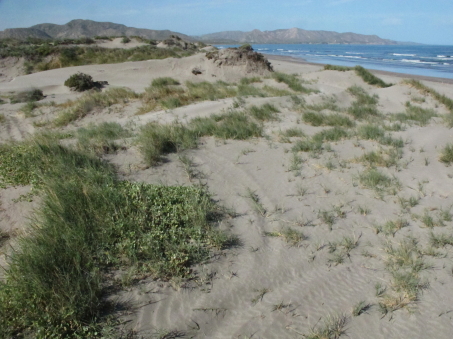
More Seashore Dropseed and Abronia maritima, as well as Sea Purslane/Verdolaga de Playa (Sesuvium portulacastrum, Aizoaceae).
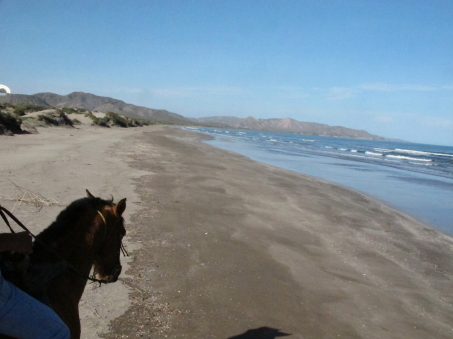
This part of the beach, 4.5 km from the river mouth, sees few humans.
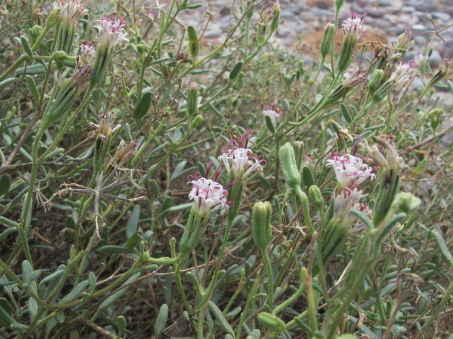
Palafoxia's composite flower heads are discoid (they lack rays) and 10-15 mm D. Each flower tube and the 5 limbs are pale pink, the staminal column is dark purple, and the long, bifurcated stigmas are dark pink.
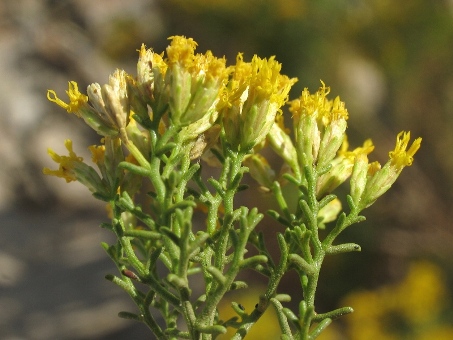
Sonoran Goldenbush/Hierba del Pasmo (Gundlachia diffusa, Asteraceae). Leaves are small and terete. The herbage is tacky, the resin helping to reduce water loss from heat and wind.
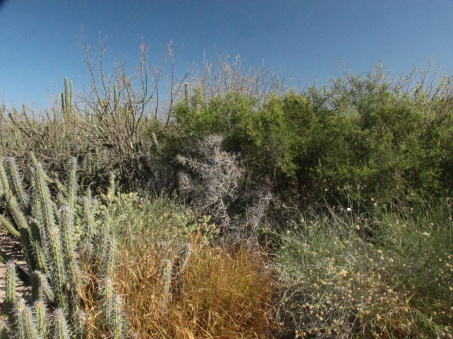
Scrub at the west edge of the dunes is dense and diverse.

Coming to the end of the trail and our 6 km round trip.
________________________________________
That's it for this month. I hope to have more interesting plants and sights to share with you next month. Until then, hasta la próxima...
Debra Valov—Curatorial Volunteer


 It seems like this season, I’m on a roll when it comes to different forms of transport to get my botany fix. So far, I’ve hiked, biked and gone out not only in our car, but our friend’s dune buggy (nothing off-road, just back roads;
It seems like this season, I’m on a roll when it comes to different forms of transport to get my botany fix. So far, I’ve hiked, biked and gone out not only in our car, but our friend’s dune buggy (nothing off-road, just back roads; 








































